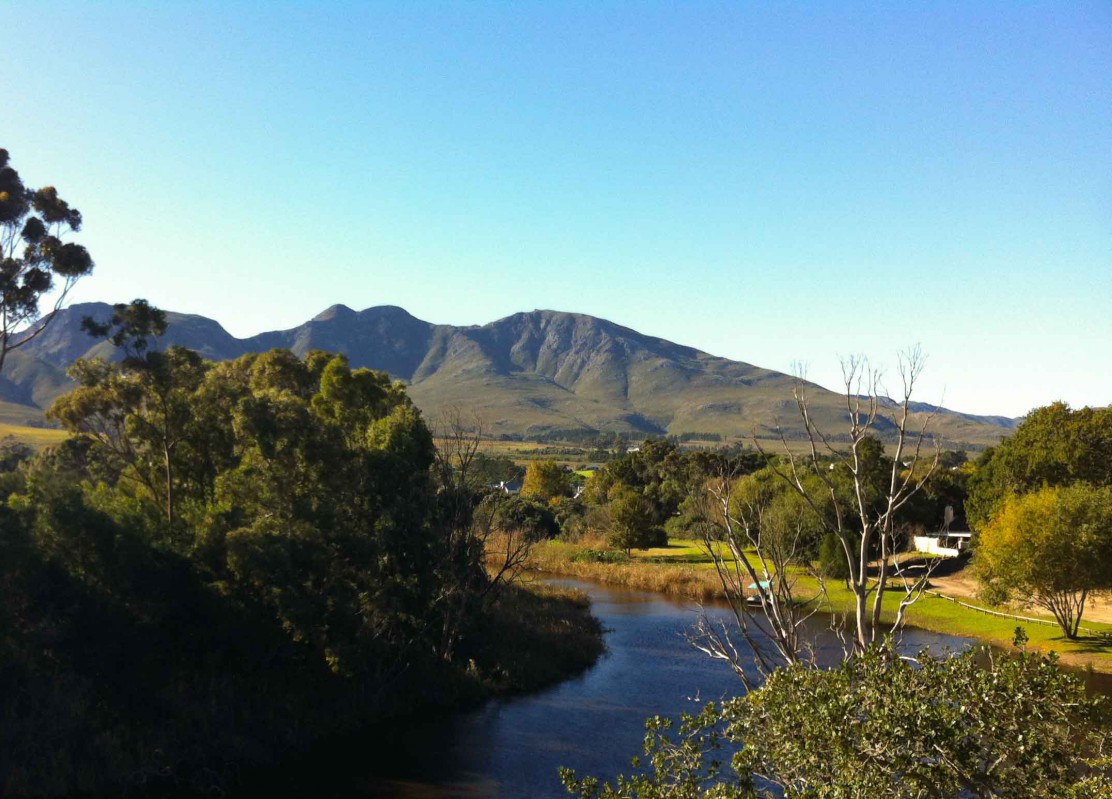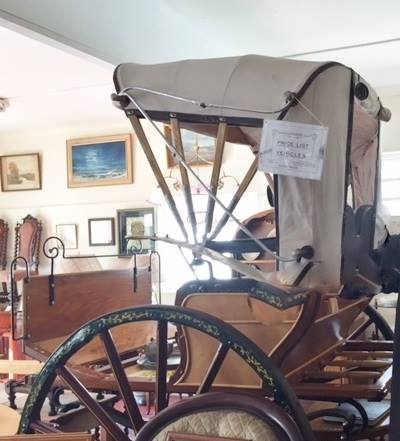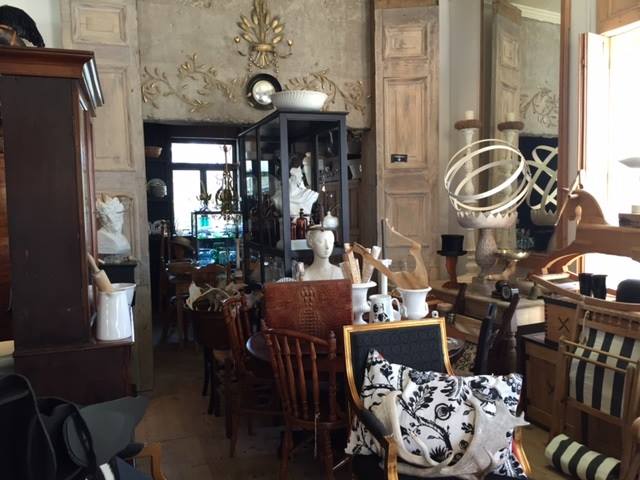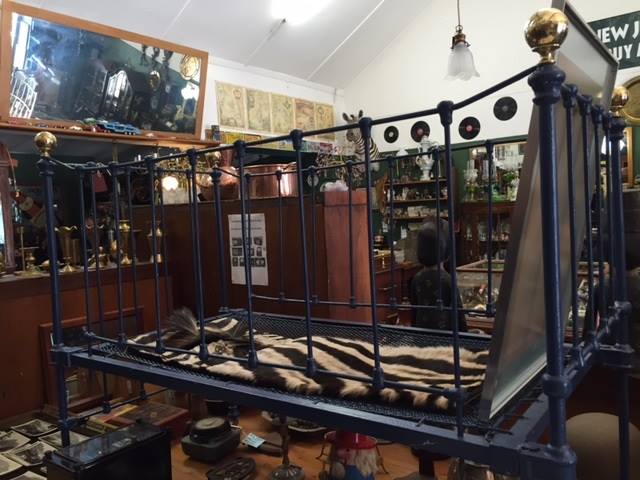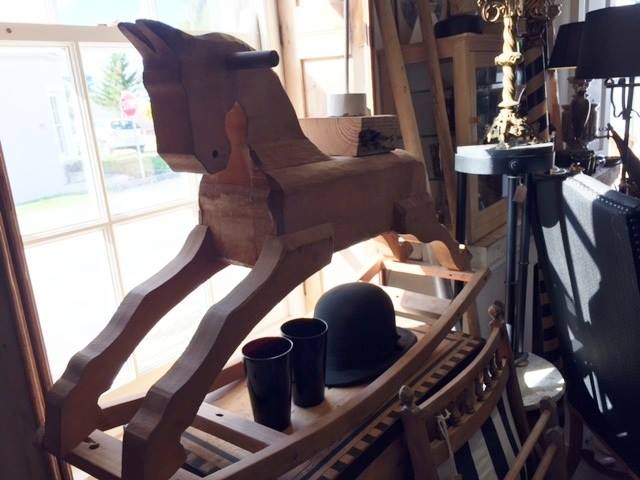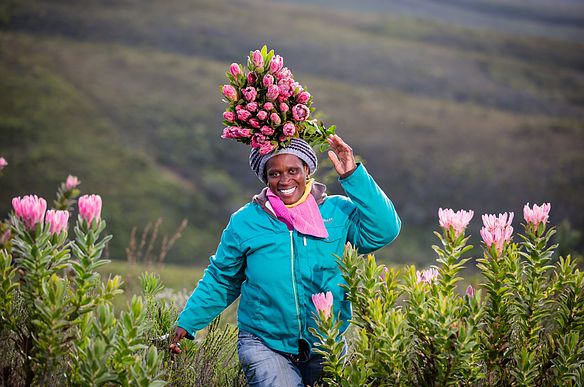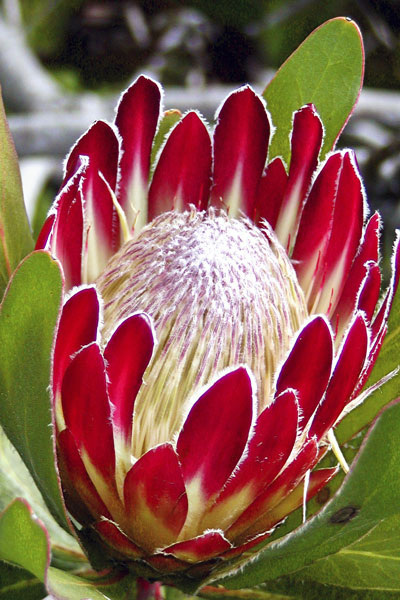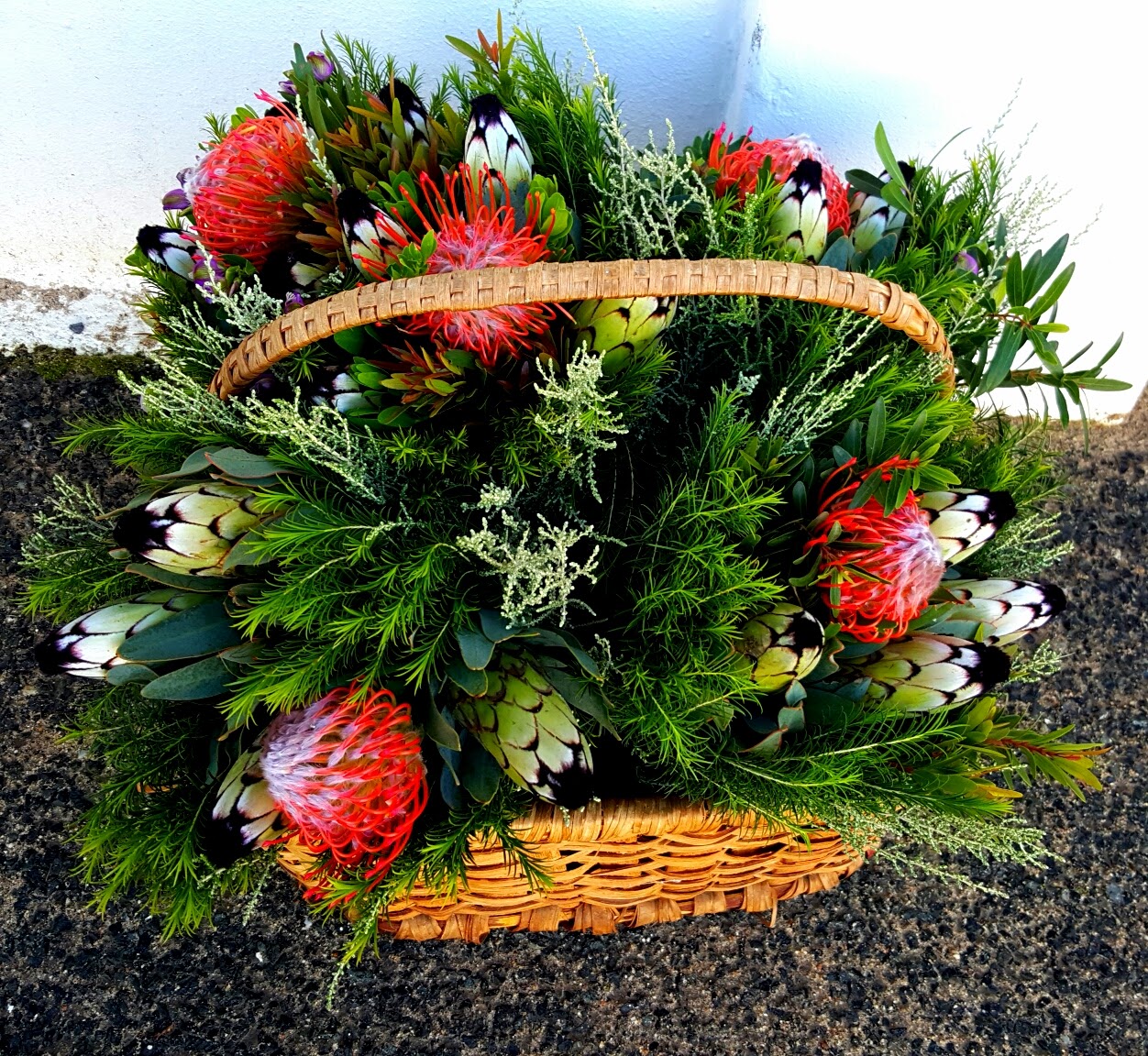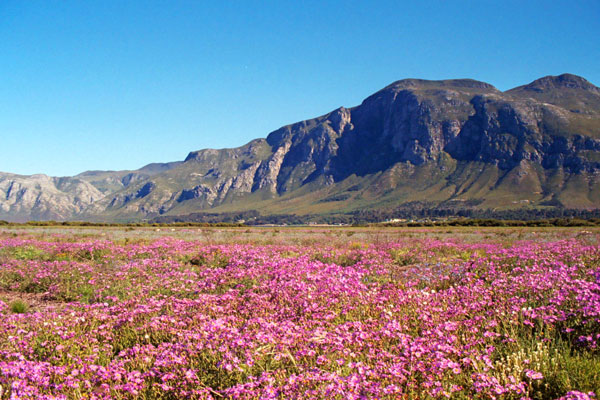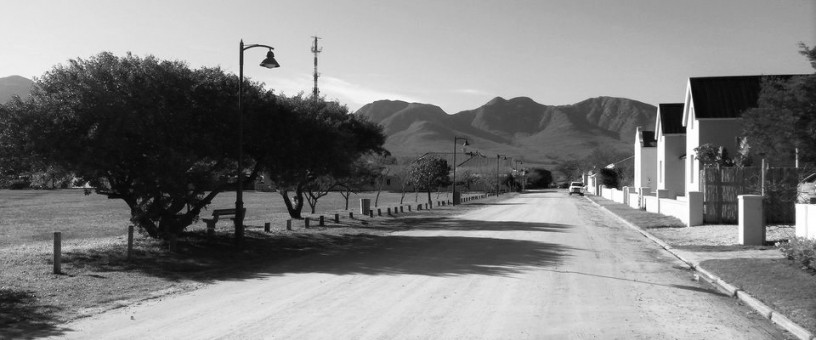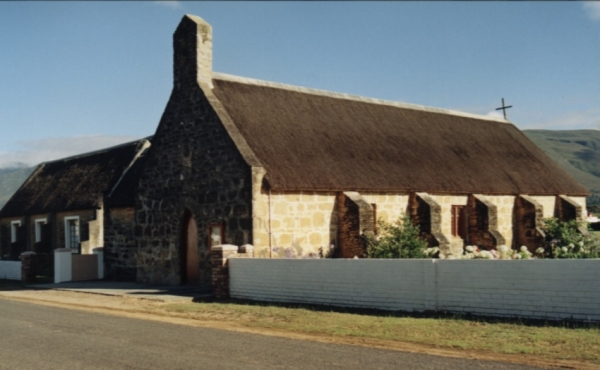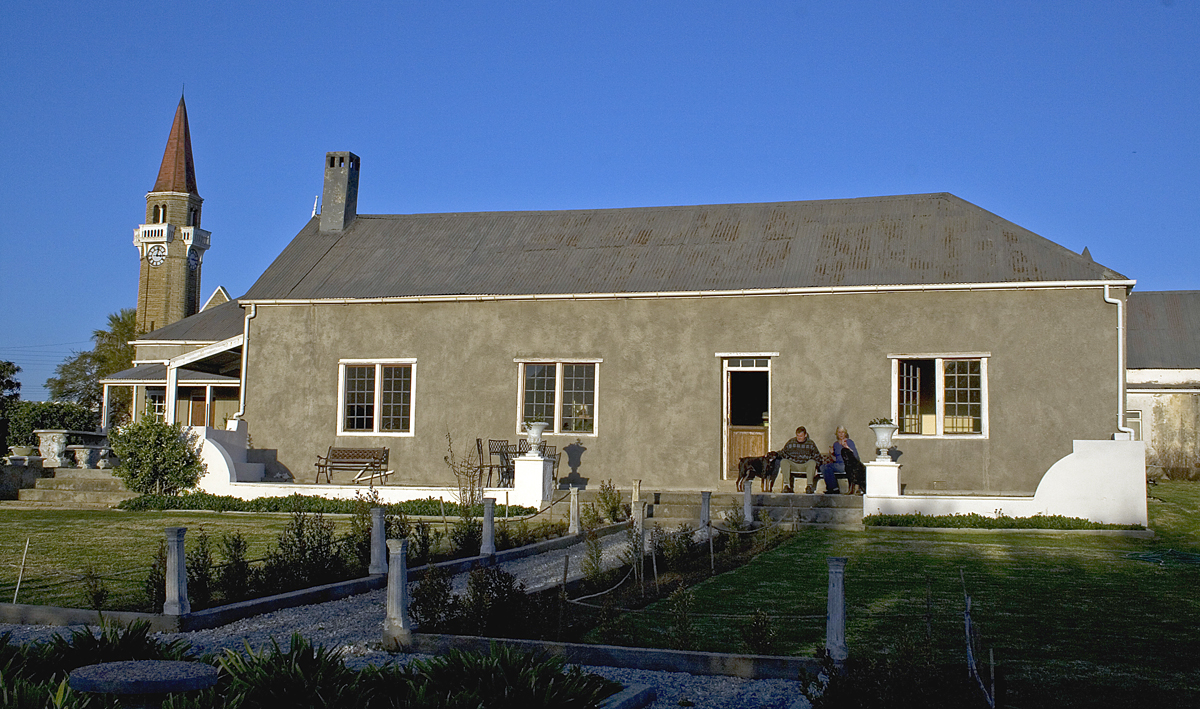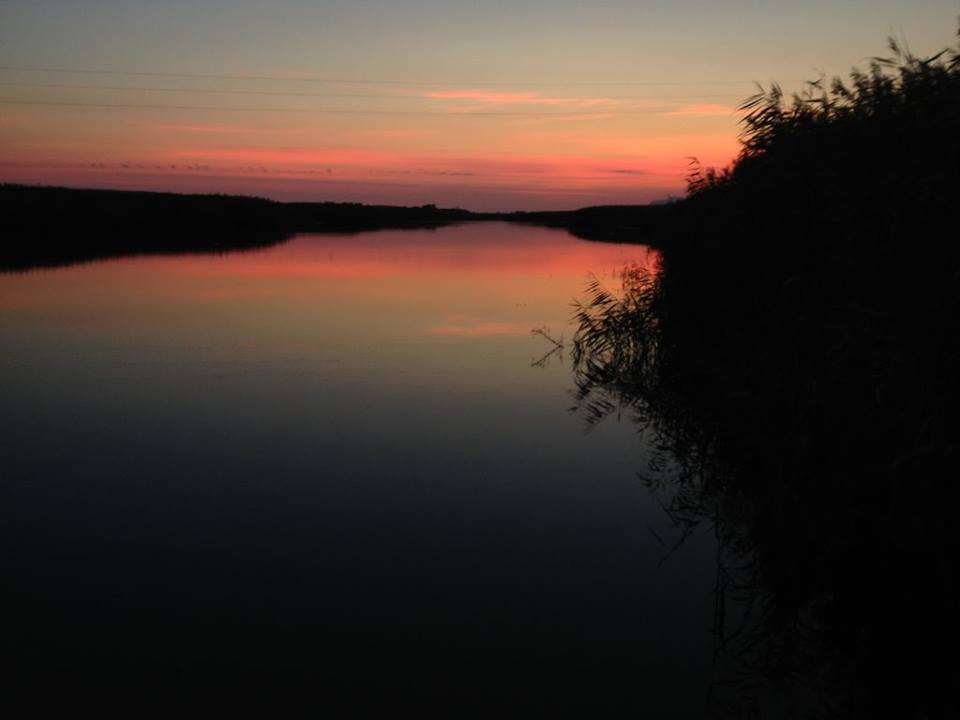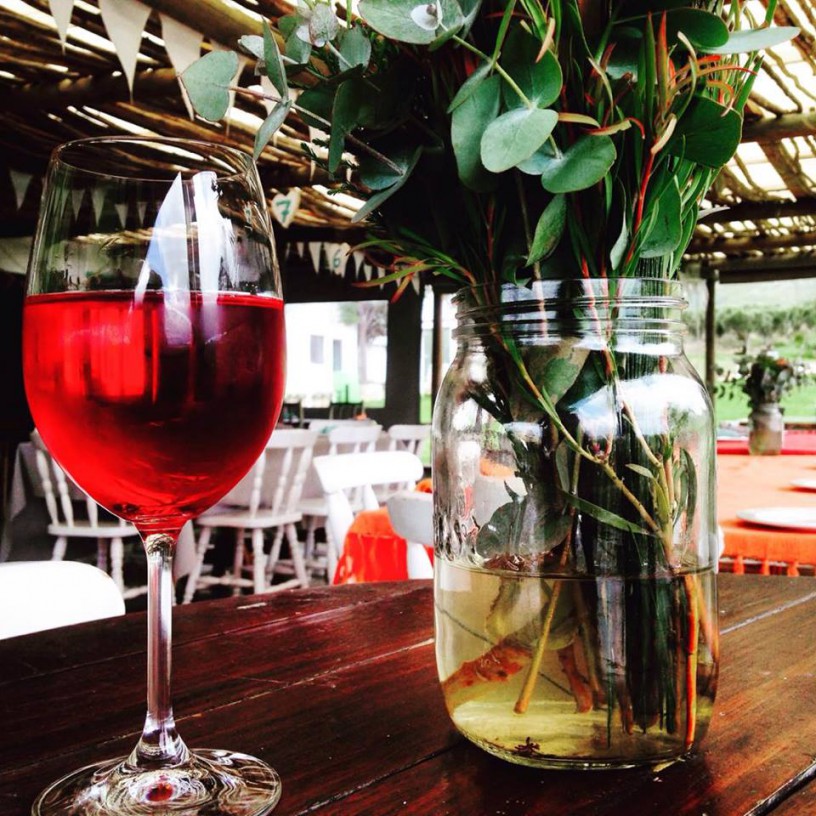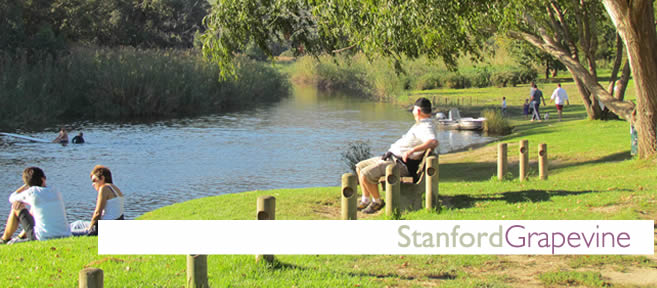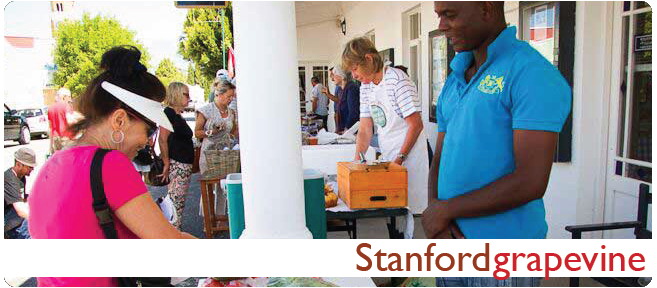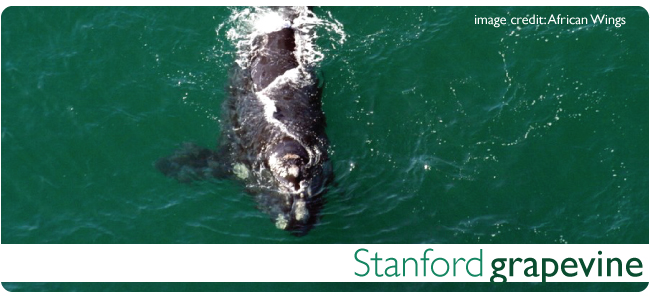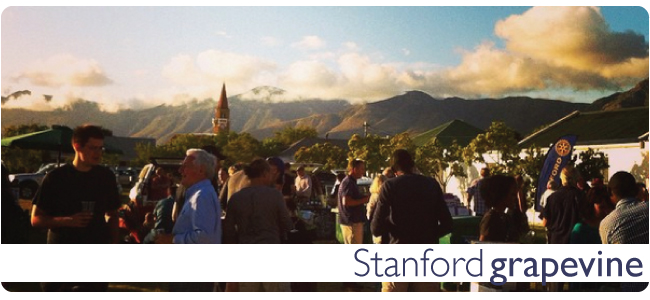The Stanford Wine Route was recently launched, and there is no shortage of wines and entertainment on this fantastic little route. There are 8 wine farms on this route, and while they are close enough together to complete in one go, I would really recommend taking more time! I recently took the opportunity to explore the different wine farms on this route to see how they are in winter. Many of the wine farms have wonderful welcoming log fires, pleasant restaurants and spectacular views, and there are lots to do for kids on some of these wonderful farms. I’m certainly not a wine connoisseur, but it was definitely an experience to taste some of the outstanding wines that are made in this region! Here I discuss the estates and what they have to offer in the order in which I visited them over a period of two days.
Boschrivier Wine Estate
Set at the foot of the Klein River Mountain range and about 17 km from Stanford on the R326, this picturesque wine estate belongs to Dr NJT De Villiers and his family. The estate bottles between 5 000 and 6 000 bottles per season. 6 Hectares are used for Cabernet, and 3 hectares of Shiraz is grown on some of the finest terroirs in the area. Wine consultant Mike Dobrovic and his able support team ensure that the grapes are always of the highest quality and that Boschrivier is a true competitor in the Overberg wine industry. This relaxing wine farm also provides a restored charming, luxurious 4-bedroom farmhouse with a spacious stoep from where the surrounding vistas can be taken in with a glass of Boschrivier Shiraz, while soaking up the stunning Overberg winter sunset.
What we loved: The small home kitchen provides outstanding toasted sandwiches and is the perfect place to stop for a rest. The shop sells crafts, jams and other produce home made by the local residents, and these are all top notch! The spacious yet cosy farmhouse is the perfect place for a luxurious country winter break with the family.
Raka Wines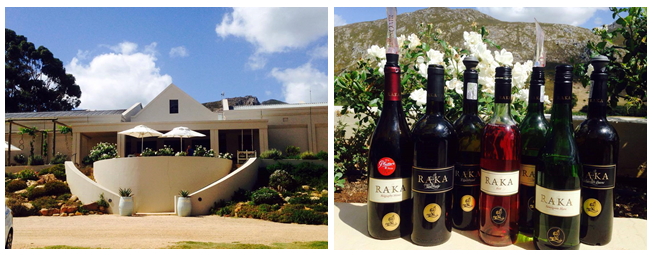
About 14 kilometres outside Stanford you will find the statuesque Raka wine estate. Here, 16 different wines are created from 70 hectares of vines. The farm is a huge 600 hectares but they also plant wheat and other produce here. Piet Dreyer’s first love is the sea, and when he bought this farm he named it after his black fishing vessel. Now, his son, Josef Dreyer, is the winemaker, and he has made some serious inroads in the wine making industry over the last few years. I tasted five of the wines which included the 2 flagship wines – the Bordeaux and the Shiraz. With prizes being awarded and a mention in the Platters 2016 wine guide, these are some of the best wines on the route. The estate itself is picturesque and welcoming, and even though there is no restaurant here, it is possible to purchase a range of snacks and nuts to go with the wine tasting.
What we loved: The place is beautiful and views of the vineyards nestled in the value are charming. Melanie, the hostess, is super friendly and knowledgeable about the wine and the estate, and her wine tasting was enjoyable and interesting. The wines are also superb!
Walker Bay Wine
Walker Bay Wine Estate is situated at the beautiful Birkenhead Brewery, and here I was lucky enough to be given a personal wine tour and tasting by Reinhard Odendaal, the winemaker. In addition to the tasty beer created here at the brewery, they also produce 5 outstanding reds and 3 white wines, and I believe they now have a bubbly in the pipeline, which I’m looking forward to! I found it very interesting to learn how the different wine making methods and the different yeasts they use create exceptional flavours and textures in the wine, and I had a chance to taste wine from the tanks in various stages of maturation. I was fascinated to learn that a Merlot could be stressed or relaxed! Reinhard believes in drinking his Cabernet only after 5 – 6 years, whereas other winemakers tend to sip and sell them earlier. I tend to agree with Reinhard.
What we loved: While the wine is great, you should also do a beer tasting for some exceptional artisanal tastes. Birkenhead has a lovely bar with a huge fireplace – perfect for winter! They also serve a basic bar menu with delicious food which is reasonably priced, and if it is sunny enough it is a pleasure to dine outside to admire the magnificent views while the kids run about.
Springfontein Wine Estate
A wine tasting in Stanford is simply not complete without a visit to Springfontein! Dr Johst Weber started out here with virgin soil in 1994, and realised his dream of creating a wine estate that involved, in his own words, “a combination of nature and human craftsmanship”. Here, the wine is matured in Hungarian, French or American wood barrels, and the elegant flavours developed here are something to behold. Only 28 hectares of vines are planted, and these grapes are minded and pressed with all the love in the world to create wines that are truly exceptional. Winemaker Tariro Masayiti hails from Zimbabwe and is one of the jewels in Springfontein’s crown – his passion for winemaking is intoxicating and evident in everything he does – and it shows in the bottles produced at this wine estate! Many of the wines are imaginatively titled by Jennifer Weber, the marketing Director and co-owner, and the names echo her and Johst’s love for rock music. Here you can find the ‘Dark Side of the Moon’ and a ‘Whole Lotta Love’ in a bottle!
But Springfontein is not just known for fascinating wines. Springfontein Eats is a gastronomic experience on a grand scale, and if you are a fan of locavore food, with a hint of molecular gastronomy and fascinating imported wines, this is the place to eat! Then there is also the informal Springfontein Barn where they host wine tastings and serve hearty German fare or cheese platters in front of a crackling fire in the cosy, rustic barn. Simply divine for winter!
What we loved: The fine food and wonderful country atmosphere of the Barn is hard to beat on a cold winter’s day. They also have stunning cottages that have been lovingly renovated with all the mod-cons and romantic fireplaces for the perfect winter country break. And the food rocks!
Sir Robert Stanford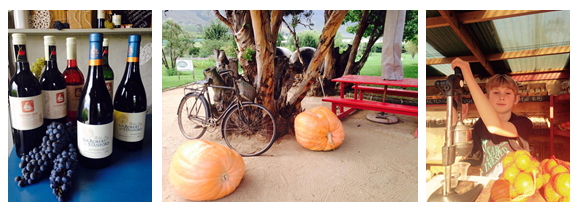
With about 120 hectares of vines, this is one of the biggest wine estates in the Overberg, and is also a biodiversity site. Here you will find 4 Cutters Cove and 2 Sir Robert Stanford wines, and these are created off-site by the expert winemakers at Kleine Zalze Wine Estate. Their market is mainly local, and is a firm favourite amongst visitors and locals alike. Named after Sir Robert Stanford who founded the village of Stanford, this estate has a long history and manages to produce inviting flavours from their excellent terroir. For those who are hungry, their Royal Oke restaurant next to the tasting room is the perfect place to enjoy fabulous family country fare in a stunning setting. There is also plenty of space and a playpark for the kids. The Grappa distillery stokes an interesting range of Grappa and Witblits, and a visit to this wine estate would not be completed without a Stokehouse tasting. At the large gated entrance of the estate you can also find the brightly coloured candy-striped Padstal, a farm stall that stocks everything from biltong to home-made produce, as well as organic vegetables from the estate and locally-grown fruit.
What we loved: This is a great place for kids! Lots of space to run around, a pond, ducks, fish, trampoline, and wonderful food for old and young. Kids can learn to squeeze their own orange juice up the road at Die Padstal. For adults there is a roaring outside fire, a cosy seating area and the Grappa is the Greatest!
Vaalvlei 
When the Terblanche family moved here to purchase this small estate in 2005, they quickly realised how special the varied soils on the farm were. As a result they were able to produce some outstanding white and red varietals that are more classic than modern. Vaalvlei, the smallest wine estate on the route, it consists of only 3 hectares, which gives the wine made here a real boutique feel. Only 2000 bottles of white and 3000 bottles of Shiraz are produced by Naas Terblanche, and they are the only wine farm on the route that produces their own version of Port – which is special indeed! The rest of the farm is dedicated to the two cottages and numerous fly fishing dams where guests can angle for bass and trout. Naas is an avid student of frogs and is the resident expert on all the species of frogs that can be found in the area. He also knows practically everything about the endangered Western Leopard Toad and other rare species of Western Cape.
What we loved: The port is exceptional in winter! And do take the time to go through the fascinating presentation about the frogs in the area – it includes clear photos, frog call sounds and lots of interesting information. Kids love it. Vaalvlei has two rustic farm cottages for guests and their pets, and if you are looking for a rural country getaway with some fishing, country vibes and good wine, this is the place to be. In addition to this there is also a wonderful variety of Bonsai trees that are for sale.
Misty Mountains
Set on the R43 between Hermanus and Stanford, Misty Mountains is 46 hectare estate produces about 5 hectares of grapes, and most of the rest is dedicated to olives and also honey. All the reds are created in French Oak barrels, and the rich, mature taste appeals to the huge Chinese market to which most of these are exported. Other wines like the Sauvignon Blanc are very popular with the UK market. Tastings are free and done in a spacious and stylish tasting room/ladies bar by the estate manager Robert Davis, and delicious cheese platters are for sale to go along with the tasting. Winemaker Neil Patterson ensures that all the wines coming from this estate are well balanced and creates a delicious French style Rosé – it is light in colour with a fruity nose, yet divinely dry. They are currently working on producing their first MCC which is very exciting. You will also find a variety of olives for sale here, and the honey from this estate is out of this world!
What we loved: They create a very unique product called Vino Cotto, which is basically a concentrated grape reduction with the most distinctive flavour! It can be used in savoury or sweet dishes, as a cordial, in cocktails, for marinades and salad dressings, and it is so popular that they simply cannot keep up with demand. Get your hands on a bottle if you can!
Stanford Hills Wine Farm
Stanford Hills was well known for excellent Jacksons Pinotage which was initially made in small quantities, but since Peter and Jami Kastner bought it, this estate has grown exponentially to produce more award winning stuff. They now make an additional two whites, an excellent rosé, a saucy Shiraz and a firm local favourite – the Veldfire range under the Stanford Hills label. They have also recently come up with the most fabulous MCC, which my friends fondly describe as ‘biscuity’. A tasting here takes place in the Tasting Room, which was initially just a small little tasting area but has exploded over the last 3 years to become one of the most popular eating spots around. It is immensely family friendly, and on cold winter days warm fires provide a cosy atmosphere in the basic but very comfortable restaurant. The magnificent views are very hard to beat, and during the autumn and early winter there are often one or two hand-fed orphan lambs running around, and bottle feeding them brings great joy to any city kid. The outstanding wine, together with great food, happy kids and a warm and welcoming atmosphere makes this one of the best seasonal wine locations. There are also several rustic cottages and a magnificent manor house to choose from for the perfect, romantic midwinter break. And they grow the most awesome Proteas for export and the local market.
What we love: One of the best wine farms around for children during the winter. A well-equipped play park, super hiking trails, horse riding, rowing on the dam, lots of space, great views, kid-friendly menu, good food, roaring fires and great wine all help to keep everyone superbly satisfied. And the very friendly, hands-on hosts and staff are delightful!
The Stanford wine Route is popular all year round, and it is really worth a visit any time you are in the Overberg!
